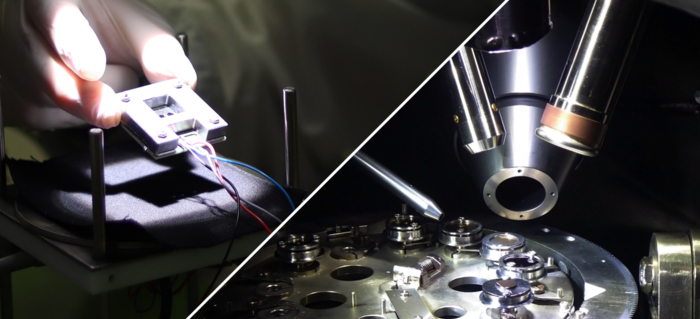New efficiency record for perovskite tandem cells

German research team develops tandem of organic and perovskite-based absorbers that reaches 24 per cent efficiency
A German research team has developed a tandem solar cell that reaches 24 per cent efficiency – measured according to the fraction of photons converted into electricity. This sets a new world record as the highest efficiency achieved so far with this combination of organic and perovskite-based absorbers.
The solar cell was developed by Thomas Riedl’s group at the University of Wuppertal together with researchers from the Institute of Physical Chemistry at the University of Cologne and other project partners from the Universities of Potsdam and Tübingen as well as the Helmholtz-Zentrum Berlin and the Max-Planck-Institut für Eisenforschng in Düsseldorf.
The results have been published in Nature under the title ‘Perovskite/organic tandem solar cells with indium oxide interconnect’.
In the current study the organic semiconductors were used for the ultraviolet and visible parts of the light, while the perovskite can efficiently absorb in the near-infrared. Similar combinations of materials have already been explored in the past, but now the research team succeeded in significantly increasing their performance.
At the start of the project, the world’s best perovskite/organic tandem cells had an efficiency of around 20 per cent. Under the leadership of the University of Wuppertal, the Cologne researchers, together with the other project partners, were able to increase this value to an unprecedented 24 per cent. "To achieve such high efficiency, the losses at the interfaces between the materials within the solar cells had to be minimised," said Selina Olthof of the University of Cologne’s Institute of Physical Chemistry. "To solve this problem, the group in Wuppertal developed a so-called interconnect that couples the organic sub-cell and the perovskite sub-cell electronically and optically."
As interconnect, a thin layer of indium oxide was integrated into the solar cell with a thickness of merely 1.5 nanometres to keep losses as low as possible. The researchers in Cologne played a key role in assessing the energetic and electrical properties of the interfaces and the interconnect in order to identify loss processes and further optimise the components. Simulations by the group in Wuppertal showed that tandem cells with an efficiency of more than 30 per cent could be achieved in the future with this approach.
The picture above shows (left-hand side) a contacted tandem solar cell in the solar simulator at the University of Wuppertal, and (right-hand side) the apparatus for measuring the energy levels using photoelectron spectroscopy at the University of Cologne.


































